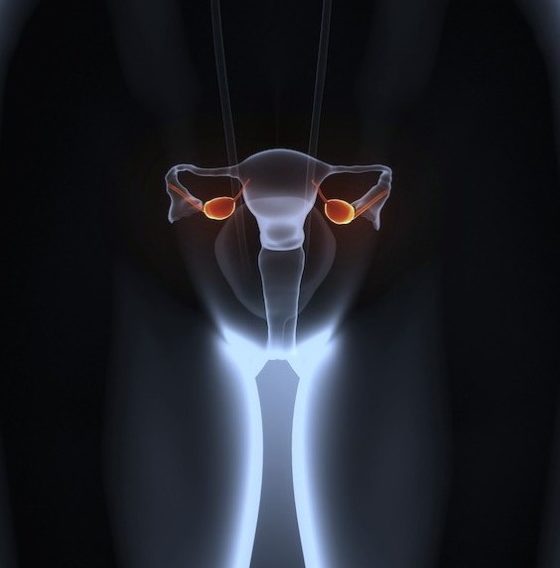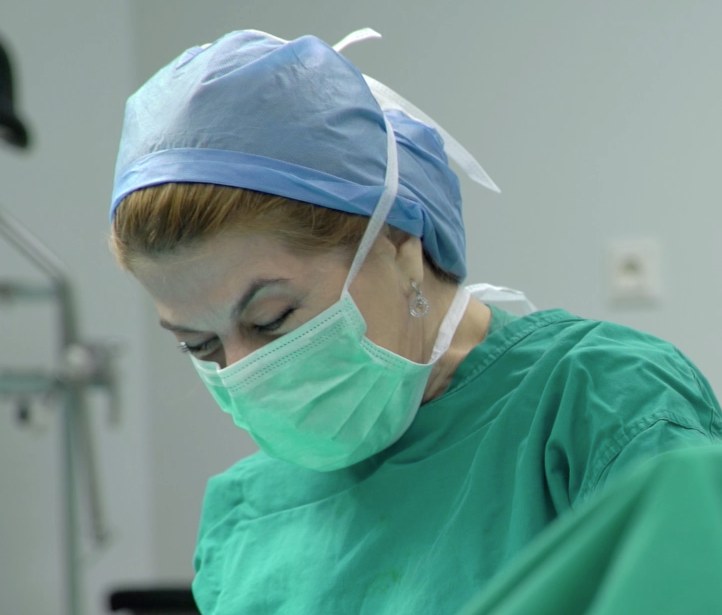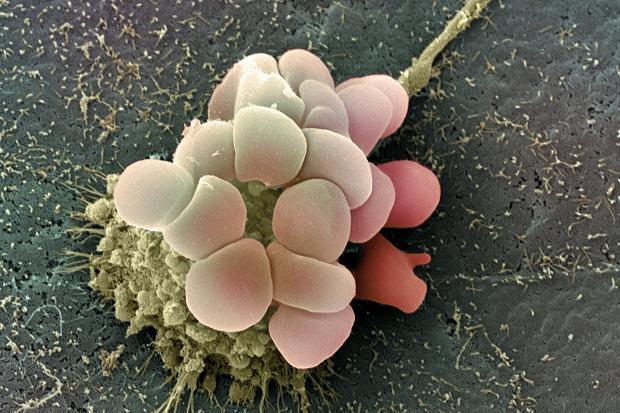
The ovaries are two small, almond-shaped organs and are located near the oviducts and the uterus.
They produce the female hormones, i.e. oestrogen, progesterone and a small amount of androgens. This is how a woman’s menstrual cycle is created.
Every month, the ovaries release an ovum and ovulation takes place. The ovum passes into the oviduct and, if it meets with spermatozoa, it may be fertilised and pregnancy will be initiated.
What are ovarian cysts?
Cysts are sacs filled with liquid that may occasionally form within the ovaries.
They are very common, especially during a woman’s reproductive period.
There are several types of ovarian cysts.
The most common are the functional ones.
These are formed either during ovulation when the ovisac does not erupt (and, thus, the ovum is not released), or after ovulation has taken place and the ovisac has not been absorbed and begins to grow in size (luteal cysts).
Ποιές άλλες κύστεις ωοθηκών έχουμε;
- Luteus body cysts
These are formed when the luteus body found in the ovary fills up with liquid or, more commonly, blood (hemorrhagic cyst). - Endometriotic cysts (chocolate-like)
For unclear reasons, tissue derived from the inner lining of the uterus migrates and is implanted onto other abdominal organs. One of those organs is the ovary. Therefore, cysts filled with blood are formed. During every menstruation, more blood is accumulated within the cyst.
These may be painful and affect fertility.
- Cystadenoma
A cystadenoma is formed from cells located on the outer layer surrounding the ovary. The fluid that fills these cysts may be of thin (serous cystadenoma) or thick (mucous cystadenoma) composition. It is usually benign and rarely develops into malignancy. - Dermoid cysts (benign teratomas).
These contain tissue derived from other body sites, such as teeth, bones, cartilage, hair, sebum. There is often a family history of dermoid cysts. - Polycystic ovarian syndrome
A woman may develop this syndrome due to a disturbance in hormonal regulation, which may result in numerous immature ovine that appear like small cysts.

What causes ovarian tumours?
Tumours may form within the ovaries the same way as in other body parts.
Ovarian tumours may be benign or malignant
Οι 3 τύποι των ωοθηκικών όγκων είναι:
The 3 types of ovarian tumours are:
- Epithelial tumours
They begin from the ovaries’ surface cells. They are the most common type of ovarian tumours (85–90%). - Germ cell tumours
These are derived from cells that produce the ovine. They may be benign or malignant. They are usually benign. - Gonadal stromal tumours
They are derived from the cells that produce the female hormones.

We are not certain about the causes of ovarian cancer. However, we are aware of several key risk factors
We are not certain about the causes of ovarian cancer.
However, we are aware of several risk factors:
1. Age. The probability of developing an ovarian tumour rises with age. Especially after menopause.
2. Smoking
3. Obesity
4. Nulliparous women or those who have not breastfed.
5. Regular use of drugs that induce ovulation.
6. Family history of ovarian, breast, or intestinal cancer.
What are the symptoms of cysts and tumours?
Cysts may be asymptomatic and may be detected during a routine OBG examination.
However, they may cause moderate or severe symptoms when they are convoluted, when they bleed or erupt.
Moreover, if they are very large they may cause:
- an increase in abdominal size
- constipation if they press against the intestine
- pollakisuria (frequent urination) if they press against the bladder.
If one of the above symptoms is present (or one of those described below), a gynecological examination should be carried out promptly because, though there may be no concerning, self-restricted conditions, the same symptoms are indicative of ovarian cancer. This type of cancer spreads easily before it is even detected.

Symptoms also include::
- Pain and abdominal swelling
- Difficulty during urination
- Pain during intercourse
- Lower back pain or dysphoria
- Dysmenorrhea (excessive pain during menstruation)
- Bleeding or abnormal blood flow during menstruation
- Spontaneous piliation (hair growth)
- Nausea, vomiting
- Weight gain
- Anorexia
How is the diagnosed?
1. Gynaecological examination
When one or more of the symptoms described above is present an OBG examination must be carried out to exclude or detect an ovarian disturbance.
The majority or ovarian morphomas are benign and, often, recede without treatment. A small percentage, however, will be ovarian cancer. In this case, the sooner the diagnosis is made, the woman’s life expectancy rises.
2. Ultrasound examination
The shape and size of an ovarian morphoma can be viewed and measured via ultrasound examination. Depending on the morphology of the mass, follow up examinations may be carried out:
3. CT or MRI scan
These scans will provide additional information concerning our diagnosis and, if the findings show malignancy, we will be able to detect possible metastases.
4. Hormonal testing
Some tumours increase the production of certain hormones and this can lead us to a possible diagnosis.
5. Serum Ca125
A protein called Ca125 usually increases when ovarian cancer is present, but this is not always the case. In addition, the levels may rise occasionally when benign conditions are present such as endometriosis.
What are the therapy options?
Ovarian cancer
If the diagnosis is cancer, all the tests mentioned above will be useful in defining the extent of the disease. Staging will be helpful in designing the optimal therapeutic plan for the specific condition.
Cancer therapy usually involves surgical excision which may be supplemented with chemotherapy depending on the cancer type and its extent.
Cystic morphomas
Most ovarian cysts will resolve on their own or following administration of oral contraceptives for 1–3 menstrual cycles.
If the cyst does not recede but, on the contrary, grows in size or is painful, is endometriotic or dermoid, there is a large possibility that surgical excision may be necessary. Usually, when ovarian morphomas are considered benign the approach is laparoscopic

The good news?
Ca125 is a biological marker for ovarian cancer. Due to the fact, however, that the findings may be positive when the condition is benign, for example in endometriosis, or negative when ovarian cancer is present, reliability is limited.

Ovarian cancer cells
The exceptional news?
The results of the most extensive worldwide study on screening for ovarian cancer have been published. The technique used is based on the statistical calculation of Ca125 fluctuation. This new method correctly detects the disease twice as often, compared to the diagnostic methods that were used up until now.
This means that early diagnosis in 86% of women can now be detected.
Early diagnosis saves lives. The results of this method are fascinating because they can accurately predict individual risk for developing cancer.
 English
English Ελληνικα
Ελληνικα



